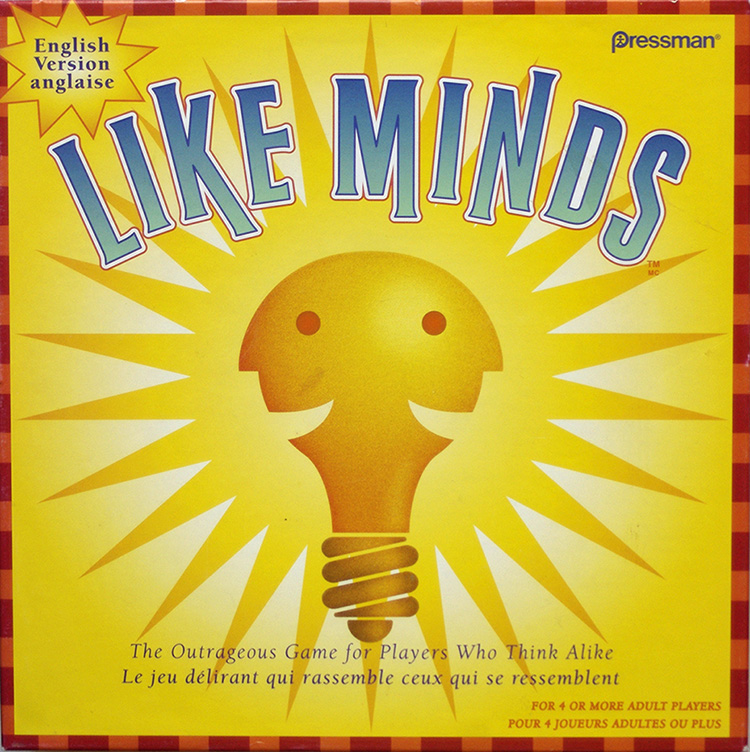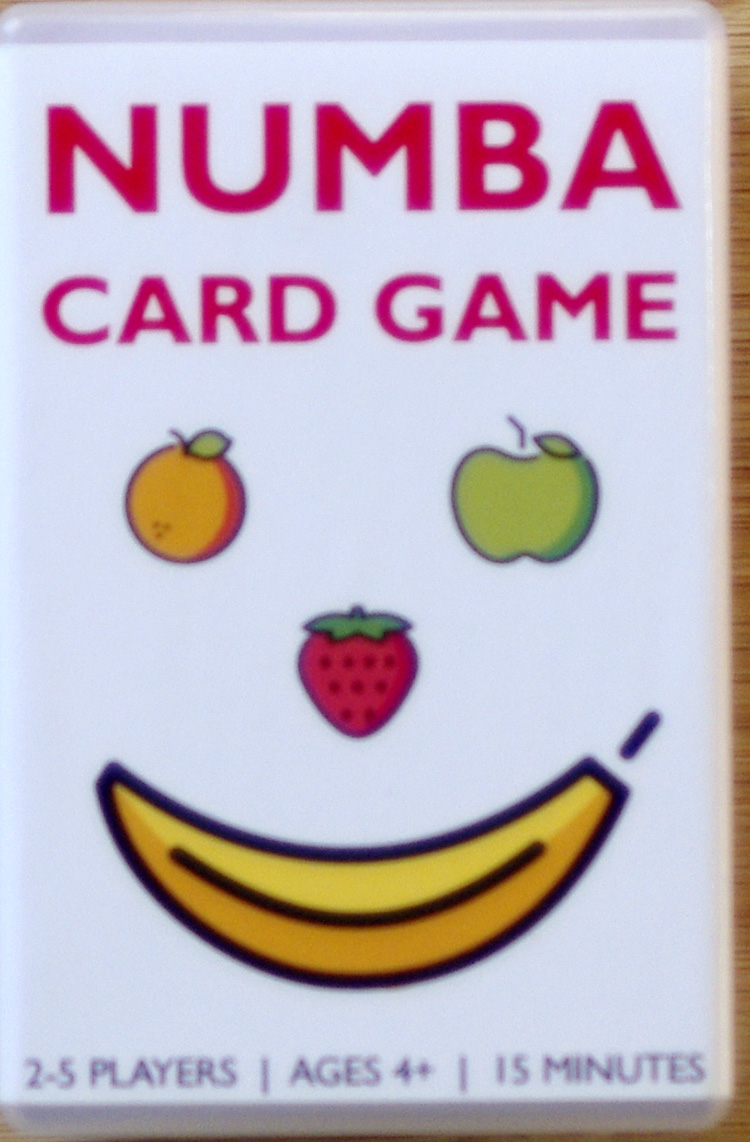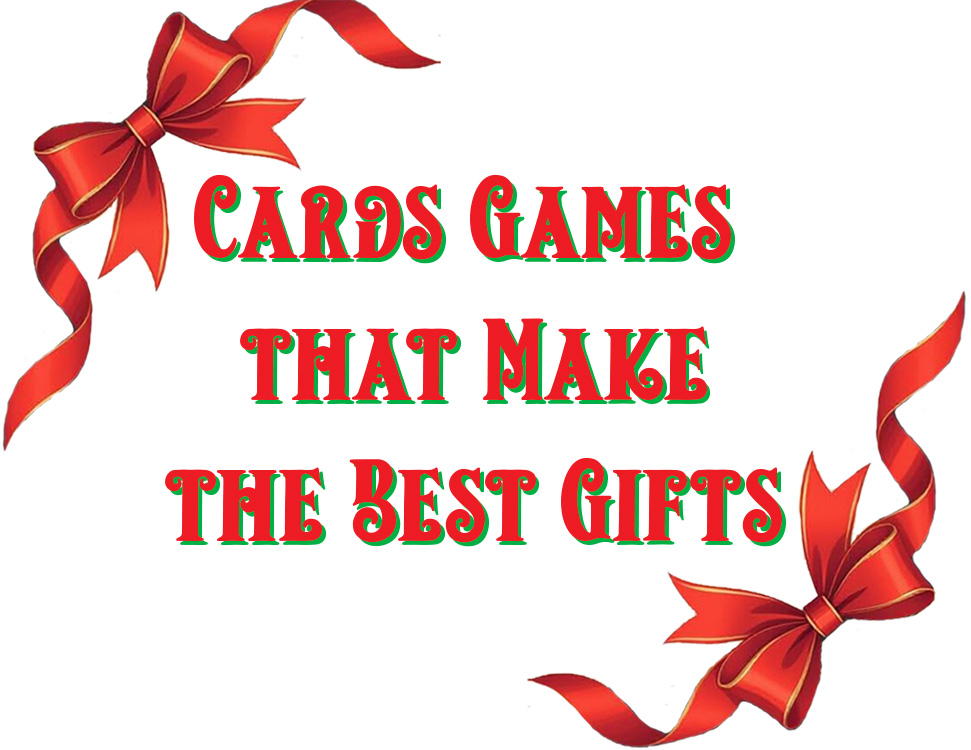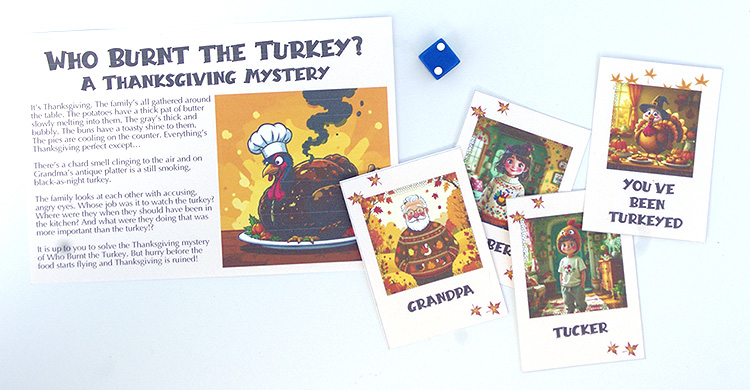The Outrageous Game for Players who Think Alike for 4 or more adult players
This post may contain affiliate links. I receive a small commission at no cost to you when you make a purchase using my link.
Here at Family Game Shelf, we love words games—Scattergories, Categories, Taboo, Outburst, Codenames. But with all those word games, did we really need another one? When Like Minds looked me in the face with it’s shiny yellow box, I thought sure why not? I expected it to be like some of the others, but I have to tell you that Like Minds has become our most played word game.
Keep reading to find out what makes Like Minds different from the others, how to play and all the things we like—including the fact that it’s one of the best games to get my teens to stay and play with us adults.
Setting Up Like Minds
First, you need to break up into teams of two. Teams sit across the table from each other, beside players from the other teams.
Next, each player puts their pawn on the board at opposite end of the path. Each player needs a pen and paper.
Last, you need to set out the dice and cup, the category cards, and the brain where players can reach them.
How to Play Like Minds
First, you need to decide which side of the table and which team will roll first. Once you decide, the player shakes the cup with both dice in it. There is one di with numbers 1 to 4 on it. The other di has the letters A through F on it.
Next, all players on that side of the table look in the cup. They are looking for the number of matches that they have to have with their partner. This is the number on the red number die. They will have to match either just one or up to 4 with their partner. This number is only known by the side with the cup. The other players have no idea how many need to match.
The other die shows the category that they will be playing with. One player grabs a card and reads the category that corresponds with the letter on the die. Categories range from “all about popcorn” to “animal sounds” and “bugs that people really don’t like” to “sneaker brands.”

Once the category has been read, all players write down any and all items that match that category. The idea is to write down words that you think your partner will also write down.
When a player on the side with the cup thinks she has enough wards that might match her partner, she grabs the plastic brain. At this point, all player must stop writing.
Making A Match
Now it’s time for the teams to compare lists. The first player reads one item off her list. If her partner has that word, they score one point. She continues going through all of her list, keeping track of all of the matches.

For scoring, if you are on the team who grabbed the brain, you must have at least the amount of matches that showed on the red number die. If you do not have the correct number of matches, you score nothing for the round. On the other hand, if you have successfully matched that many words, you get a point for every match (even if it’s more than the rolled number) and you get a three point bonus.
To mark your score, the player on the cup side moves her pawn that many spaces towards the center of the board on their colour path.
For players on the other teams, they score one point for every match they have made, regardless of if they have the correct number of matches. For example, if the rolled number if 4 and a team has only 3 matches, they get to move their pawn 3 spaces.
Round Two
Once all the matches have been made and the pawns moved, it’s time for round two. The cup is moved to the other side of the table where a player shakes the cup to get a new number and category. The category is read from a new card and the race is on again. This time only players from that side of the table can grab the brain.
Play continues in this manner with the cup and brain changing sides after each round. Remember, that you have to match your partner so there is no debate of if the word matches the category precisely or not. For example, if the category is “parts of an apple” and a team matches with the words “sticker” they get the point, even if someone says that the sticker isn’t part of the apple but put on it. It’s about matching with your partner.
When one team members’ pawn reaches the middle, then all points from that point on are scored with the other pawn.

Winning Like Minds
When a team gets both of their pawns to the middle of the board, they win.
What We Like
First, we like that this game is a team game. We also like that it’s about matching with your partner. This makes it more fun than some of the traditional word games and it makes it easier for players who are not as strong in these games. (For example, I almost always win Scattergires so the others are less likely to want to play with me.) Like Minds makes it an even playing field for everyone.
Second, the fact that there is no letter to have to use makes it easier to play. You get stumped a lot less when it’s just a category to use.
Third, there are a lot of card and categories to play with. We haven’t yet had the same one and it will be a while before we see that happening. No leg up for those who can remember what was said the last time that category came up.
What We Don’t Like
First, the shaking of the cup is loud. I guess this is unavoidable as you need to keep the match number a secret, but it’s kind of annoying.
Second, you need to keep the board out of the playing area. If you don’t, then it gets knocked around if there is a race to grab the brain. This results in the pawns sliding around and who can remember exactly where each one was? Also, having two pawns for each team isn’t really necessary. We often forget which one to move.
Last, as with all games like this, there are some categories that we just don’t know. For example, Tennis pros? Sorry, I’m not sure that I can even match one. We just reroll when this happens. Of course if you roll that you need one match that’s not so hard.
Is Like Minds Worth Adding to you Family Game Shelf?
If you like words games, then yes, Like Minds is one to definitely add to your shelf. It’s fun and easy. We’ve played with each family member playing with everyone and its fun any way. (Usually there’s a team that is better together for these games, but not in this one.) Like Minds has really turned into a family favorite, and like I said, it’s almost guaranteed to keep my teens at the table to play a game.

You can get your copy of Like Minds here. Canadians can shop for Like Minds here.
And if you’re interested in seasonal word games be sure to check out our Family Game Shelf Shop where we have Taboo, Outburst, Codename add on cards for each season and lots of other fun games too.
Rating

Joel

Julia

Carrie-Anne






Be the first to reply